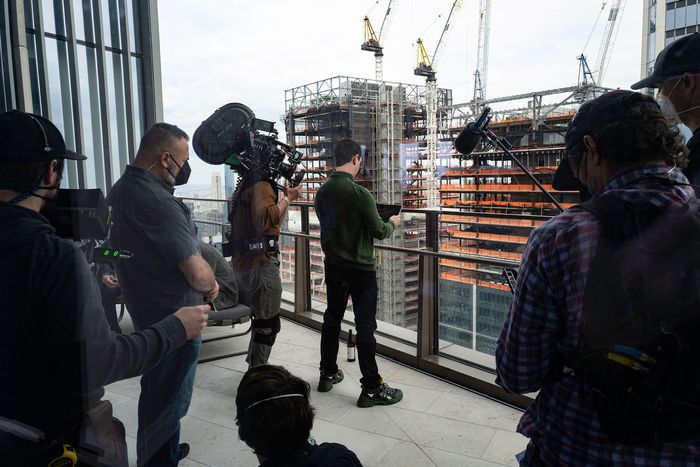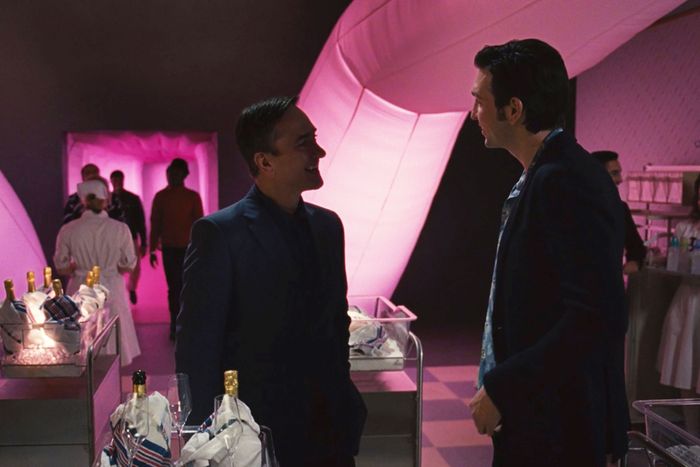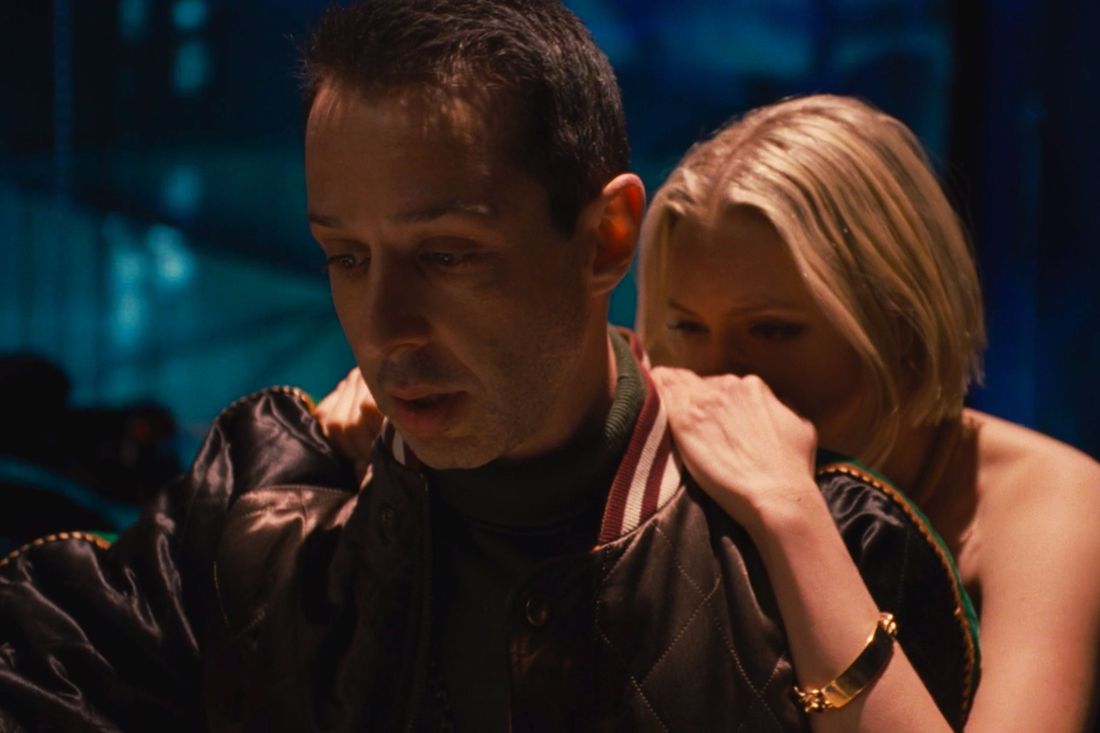
Lorene Scafaria is the director of such films as Hustlers and The Meddler, but she’s also a devoted television fan, and as it happens, her favorite show, maybe of all time, is HBO’s Succession. Scafaria, who was raised in New Jersey and got into cinema through playwriting, achieved a personal milestone by directing episode seven of the show’s third season; that’s the one where sad-sack failson Kendall Roy (Jeremy Strong) throws a gigantic 40th-birthday party for himself inside a multilayered Manhattan event facility while he’s on the outs with the rest of his family.
Despite their animus, Kendall’s siblings Shiv (Sarah Snook), Roman (Kieran Culkin), and Connor (Alan Ruck) attend the bash mainly out of train-wreck fascination, but also because they want to woo tech mogul Lukas Matsson (Alexander Skarsgård), who’s on the guest list. They need an alliance with Matsson to boost their dad Logan’s (Brian Cox) company, which is besieged by would-be sharks and under investigation by the Feds for covering up a string of deaths on their cruise ships. There were a lot of narrative pieces to put together in Scafaria’s episode, and most of it takes place at the party, transforming the hour into one of the show’s signature episodes where most, if not all, of the important action occurs in one location.
We talked to Scafaria about the complexities of handling so many characters and so much plot in such a huge space (the party was filmed at the Shed at Hudson Yards) as well as the affinities between Succession and theater, why a one-size-fits-all approach doesn’t work with directing actors, and the episode’s more HBO-y moments, including the vagina tunnel and cell-phone-in-the-urinal scene.
How did you come to be involved with Succession?
I believe I had put it out there that I was interested in directing an episode right after the Hustlers promotional tour was over. I knew I’d be spending the next year writing my next film in a dark room, so I thought about what else I’d really like to do during that time. Succession is my favorite show in 15 years — maybe all time — so I wished on a star and had a call with Jesse Armstrong and Mark Mylod in February of 2020. I’m not sure if it was then that I found out it was going to be the birthday episode. They told me they wanted me for a particularly cinematic episode. When I finally read the first draft of the script for this episode, I felt so spoiled!
After that, it was about diving into this bottle episode that takes place in Manhattan. The process started with finding and securing this main location and trying to draw up the plans to create this enormous, sprawling party.
What was the biggest challenge?
Taking a show and all these characters you’re very familiar with and then basically putting them in Burning Man, except in Manhattan — creating a space you’re going to build up and then tear down when it’s all over. You realize going into it that you’ll never see these characters in this space again. I had to figure out how to maintain the visual language of the show while at the same time introducing this entirely new place and this party — an event that exists for one night only.
How would you describe the visual language of this show? And what’s the relationship to your own style? My perception of your movies is that they don’t feel as volatile and loose as Succession. The show is this ever-evolving thing. Lines are constantly being cut and added, things are changed on the fly.
Yeah, it is like that. Of course, the snap-zooms — that part of the visual language was established early on. They shoot the show largely handheld with two cameras running constantly in huge ensemble scenes and picking off dialogue here and there. It’s all really loose.
How often have you worked like that in the past?
On Hustlers, there were some larger ensemble scenes, particularly the locker-room scene, that were a lot like what the entire shoot of Succession is probably like. Sometimes you’ve got so many people in a scene and you’re trying to capture something really lively and on its feet, so you have to shoot in a way that’s intended to maintain spontaneity, keep it loose, and elicit surprise.
On this show, you’re also working with brilliant actors and incredible writing. It becomes a lot like directing theater. I would have a vision for it, but it would need to be a shared vision, obviously, because it’s someone else’s creation. As a film director, I’m used to following my own personal vision. In this case, you want to bend to the show. You want to be true to what Jesse and Mark created in the first place.
Is it awkward coming into a situation where the style of the thing is already fixed?
That’s the strange but beautiful thing about directing an episode of television: You’re sort of a special guest. You step into this role, and you’re somehow throwing this party with a lot of people who have been there for years. It’s challenging but really fulfilling.
Isn’t the show shot on 35mm film?
Yeah. Really large magazines; really long takes. It’s exercise.
Have you shot on film before?
I have, but none of my features were shot on film, so this was a bit different, although the pressure was off because I had a crew that was very experienced working this way. I think everyone loves to be able to work on film especially now that most films, obviously, aren’t shooting on film.
How is shooting on film different than shooting digitally?
The image is different. I think there’s a quality to it, a texture you could certainly manipulate to get a kind of filmlike quality on digital. But film changes the approach to everything. When you’re shooting digitally, you’re often not precious enough about what you’re capturing. Everything feels endless.
With something like this, where you’ve maybe got a really juicy five-minute stretch of dialogue, you want to make extra sure the cameras are where they need to be. Everyone needs to be able to pivot and move within the scene and feel free.
What parts were the most fun for you?
Blocking the characters of Succession was something I was really excited to do. Logan’s office, especially, was that for me. You can certainly just let the actors go and have the cameras dance and pick it off as you go, but it’s such a perfect little theater space in Logan’s office. There were two scenes in which everyone was up and then everyone was down. I spoke to Brian about Logan being light on his feet for the first scene and then being planted like an oak tree behind his desk for the second. It was a little scary to tell Logan where to go in his own office, but we had a lot of fun.
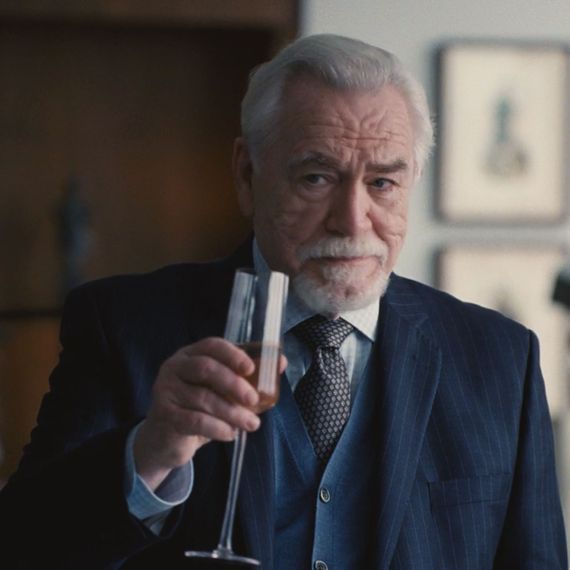
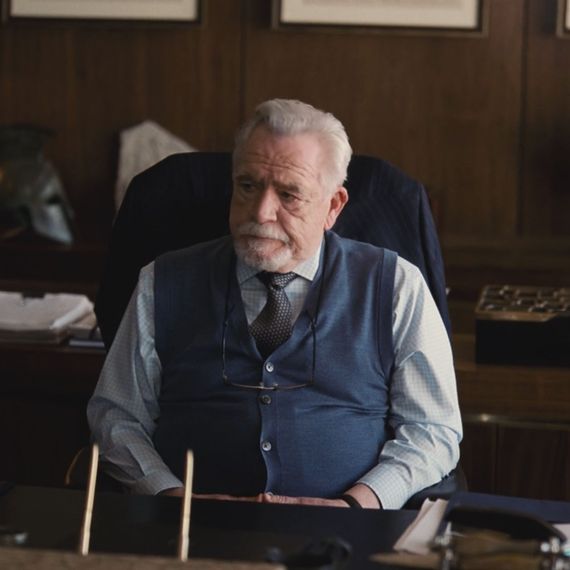
You came to filmmaking through theater, right? Is that where you learned how to block actors for the stage and then for the camera?
Yeah, technically. I was always writing and always interested in movies, but I grew up in New Jersey, and then I lived in New York, and I started out writing plays and trying to put them up myself and direct them. Blocking was definitely something I had to understand early on.
Then I went and made some short films. That was kind of the passing of the baton to myself in film, trying to transfer those theater skills over.
Besides blocking, what skills did you acquire and what lessons did you learn through theater that have proved useful in filmmaking?
Learning how to read a text helps. You have to be able to pace something out, find the beats within a scene, and work closely with actors to find their truth. It’s a lot like directing a play in that you’re giving every character their own intention. Everyone in the scene has a different intention, a different reason for being there, a different loss, and you have to communicate with all of the actors differently.
What’s the most important thing to remember when directing actors?
Actors all have different needs and different approaches, ways that they like to work. That was an important thing I learned from theater. I wanted to communicate a lot with the actors about what they needed and what I could I provide for them, especially with certain sensitive scenes and more vulnerable themes. How could we find that together?
What kinds of different approaches do actors have?
For some actors, the process isn’t anywhere close to the Method for them, and they’re just trying to reason it out logically in their heads. For other actors, it’s much more of an emotional journey they’re taking. The key is to trust the text and be active in listening to the actors — and try to provide a space for them to comfortably work in.
You’ve got me thinking about the connections between the show and theater, like the fact that many of the signature episodes are rooted in a particular location, whether it’s Kendall’s birthday party or the yacht where Logan decides who to sacrifice or the palatial homes in various countries where other episodes take place.
It really is like a little traveling theater troupe. It’s almost like the characters themselves get to try on new roles when the locations change. Who are the Roys when they’re in Italy? Who are these people when they’re at a gigantic birthday party? I think that’s what’s so thrilling about seeing them in these different environments and always staying really grounded and rooted to this company, this sort of institution that’s out there, and always returning to that reality.
I want to go through some of the scenes and sets with you and get a few reactions to them starting with the tree house. What are your impressions and memories of that part of the location?
That was a really challenging set because we were kind of under the gun by the time we got to the tree house, and it was such an important setting for the story. In terms of what to pull off at the party, Stephen Carter, the production designer, did a brilliant job of trying to figure out what ridiculous things Kendall might have asked a staff of people in various states of seriousness. The tree house is a great emotional anchor for that, with three of the Roy siblings almost colliding in and near this space.
The tree house is also the highest point you could get to in this party, and that’s something we spoke a lot about when planning the storytelling: utilizing all these different levels and showing the characters taking escalators up to the next floor and the next floor after that. One of the joys of filming in the Shed was the maze of escalators that enabled this sort of vertical storytelling.
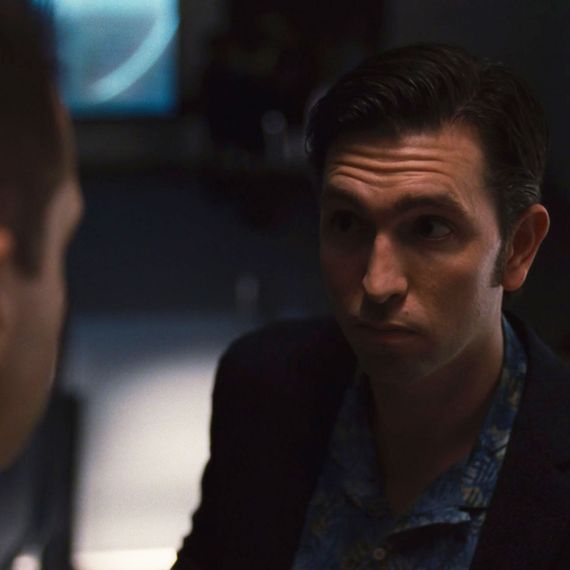
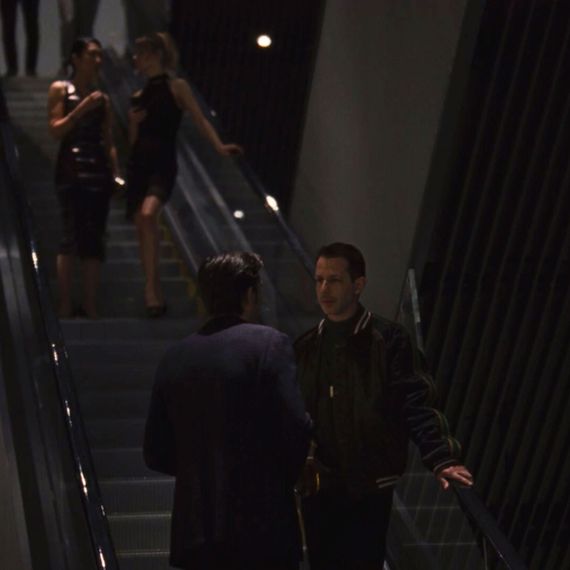
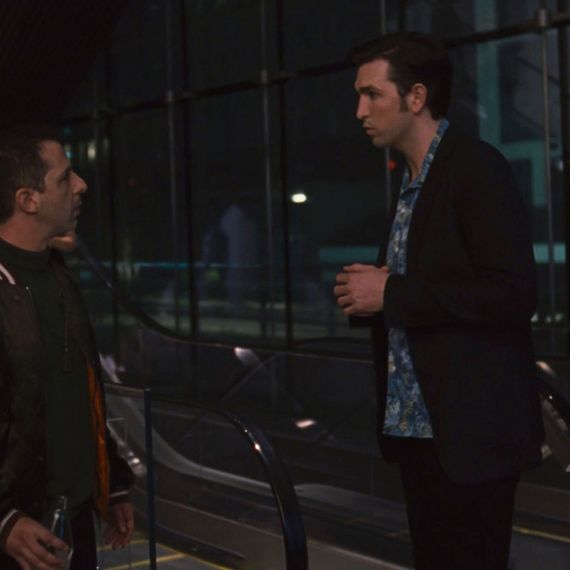
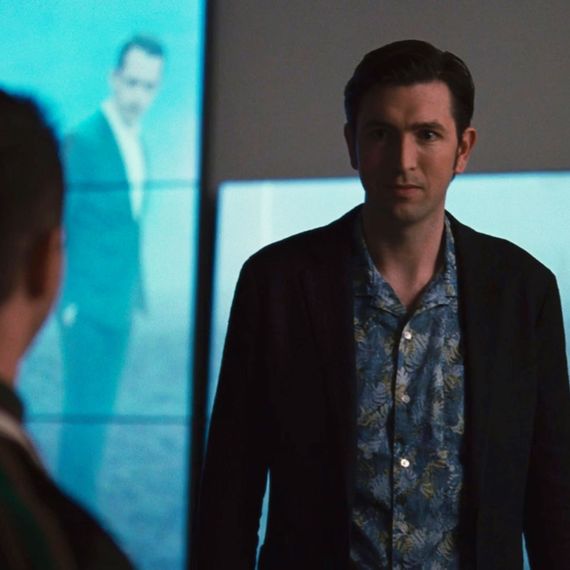
I’m interested in the figurative or symbolic aspects of the party. When we enter this space, we’re inside the ridiculous mind of Kendall Roy, to the point where the party scenes verge on becoming those bits in Eternal Sunshine of the Spotless Mind where people are chasing each other through Jim Carrey’s subconscious.
That seems like a movie Kendall might have seen and wanted to bring to life at this event. The most enjoyable thing about being on all the sets that Stephen and his team put together was you knew where it was all coming from. You knew it was all the result of these absurd requests that were made, most of which had to be realized whether Kendall was ever going to actually walk through the finished rooms or not. I liked to think that maybe Kendall didn’t even get to do a final run-through himself because he was too busy. Jeremy Strong and I were born the same year, so there was something lovely about us throwing this party together.
What can you tell me about him?
Jeremy is one of those very special actors who’s so in touch with himself and so honest and truthful that he can make a likable character out of this very complicated, half unlovable person who has a moral center but is completely out of touch with the real world.
We knew Kendall would absolutely demand that every detail of the party express his view of himself, even when it came to the music playing. When we were setting it all up, we got to ask questions like, What’s Kendall’s taste like? What vibe is he trying to get from the crowd here? What seeds has he planted? What tiny little traps has he tried to set that maybe no one will see?
Now I’m hearing “Funky Town” playing through the confrontation at the entrance to the tree house.
All bangers, all the time! That’s the soundtrack Kendall’s curated for everyone. And that’s what’s wonderful and vulnerable and a bit sad, actually, about all of this: Kendall’s determination to have this entire thing express what’s happening in his mind in such detail when most of the people there aren’t even paying attention. I mean, there’s something a bit sad about throwing yourself a giant birthday party in general, you know?
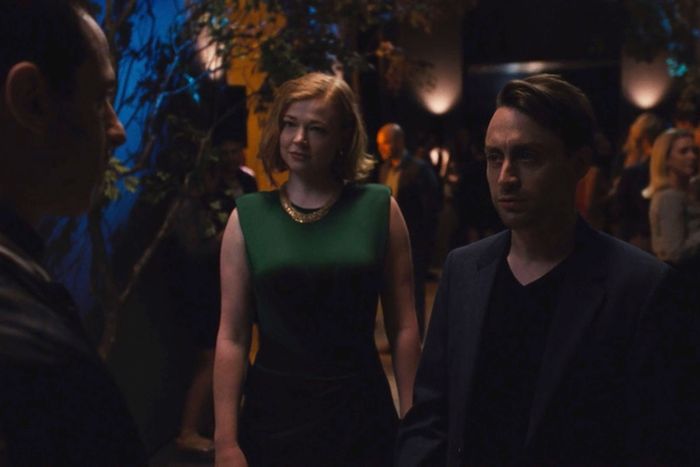
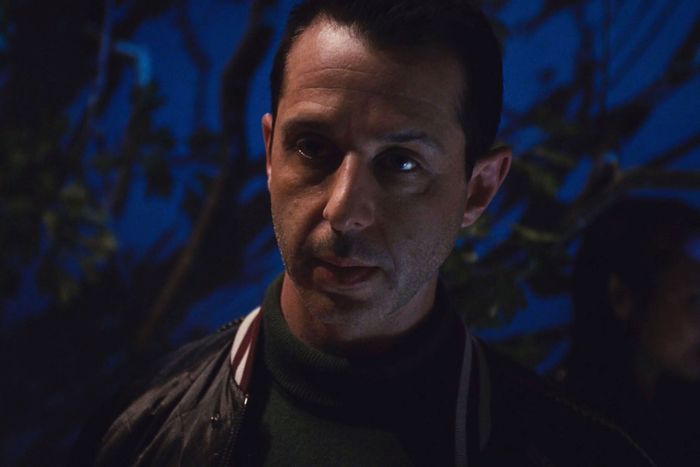
There is, there is.
The event is for the benefit of the siblings, really. Kendall wants them to see him in his element. And how is he curating his element? How is he trying to realize his best self and also create something he can show off to them? Those are some of the questions we had to keep in mind.
He wants to get across the idea that there is at least one thing that is entirely his and that they can’t have.
Something like that, yeah. There’s also something innocent and childlike about Kendall in this episode, especially at that moment. That’s why the tree house is so meaningful to Kendall. That’s why he wants to bar the others from entering it.
I guess that’s the character’s saving grace: He’s such a wreck that you can never hate him entirely.
I do feel that way about Kendall. You want to give him a hug — and then a shove after.
I love how the siblings all play off each other and react to each other, and I love seeing how their father thinks of each of them. You see his attitudes resonating within them. Those nuances do so much. The jockeying for position, the nonstop wrestling match between the siblings: I think that’s why I think why people watch the show.
It’s my journalistic duty to ask you about Kendall’s mom’s vagina tunnel.
When we saw the drawings the first time, I couldn’t believe we were actually going to get to do this. We’re sitting here choosing the right shade of pink. I wasn’t sure we were going to actually reach the finish line on this one. Then we saw these giant inflatable legs on the other end of the tunnel, all blown up, and I realized, “This is happening.”
Tell me about the art installation in Kendall’s office with windows and TV screens full of flames.
Amazing. Waystar Royco on fire. We talked a lot about what that could look like. I wasn’t sure if it was going to be some kind of old theater trick with cellophane fire. We ended up having these rear-projected flames that did the trick better than any cellophane. It was also fun that we got to do two scenes there. Kendall with this card, having a quiet moment in hell with himself. And then Greg and Comfry go in there.
Right, and the two of them are oblivious to Kendall’s distress.
Yes, exactly. But Greg also is aware that the heat is coming for him.
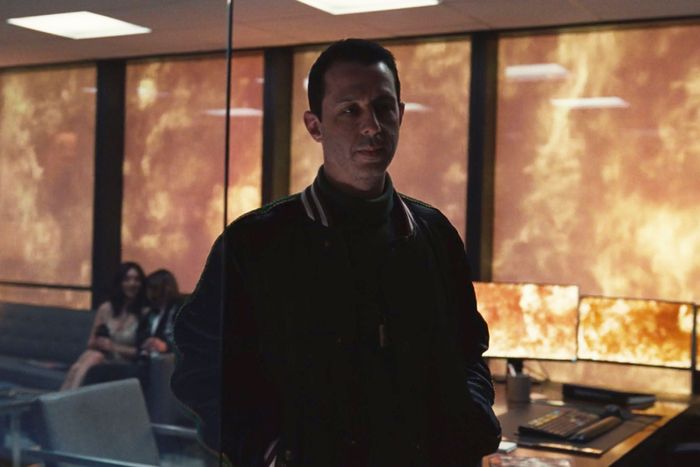
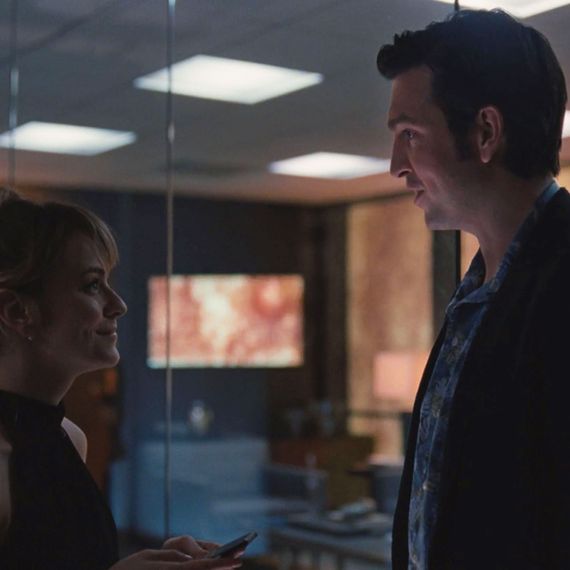
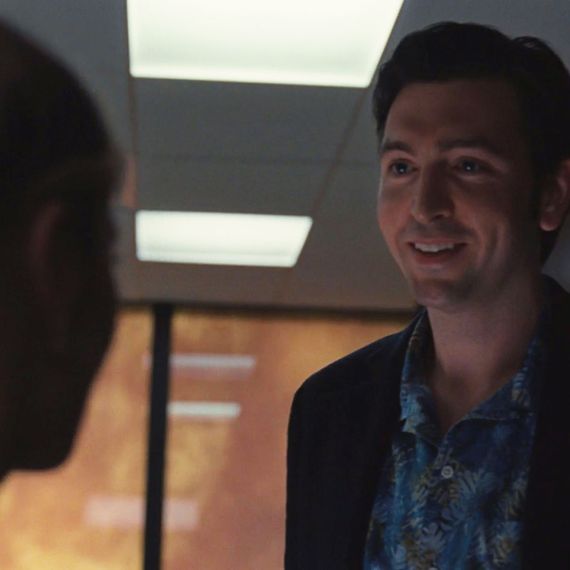
How about shooting the scene in the bathroom with Roman and Madsen, where Madsen pisses on Roman’s phone?
That was the hardest I’ve laughed on set, ever. Kieran and Alex had such instant, hilarious chemistry. I don’t know if they were trying to one-up each other, but they kept raising the bar for each other the whole time.
Kieran is so hilarious and such a great improviser and thinks on his feet and acts with his whole body, and in this scene, you get so much physical comedy out of him. It’s the most Roman-y action ever, and it’s even better when you pair him with an actor like Alex, who’s very funny in a different way. Alex was excited to play, and he had a great tennis partner in Kieran. There were so many takes of that scene that had various verbal improvisations and physical improvisations that I wish we could’ve just strung them all together. They were all good!
How many takes did you do of Culkin throwing the phone into the urinal? Was it a real phone? Did Skarsgård provide the stream?
That was a real phone. I think it had to be a certain phone for just that scene. I’m not sure if everyone will let you desecrate their devices in that way! Kieran nailed the throw every time. I mean, every time, he tossed it right in there. The challenge had to do with the loading page: making sure that when the piss hits the phone, the loading graphic is on the phone’s screen. We worked hard on the color of the urine. That was a conversation. How clean is this man? How hydrated is he? That’s the nitty-gritty of my job.
Was the actor only good for one take with his own piss? Or did you have a tube and a bag in there the whole time?
He had a tube and a bag, yeah. That stream is movie magic.
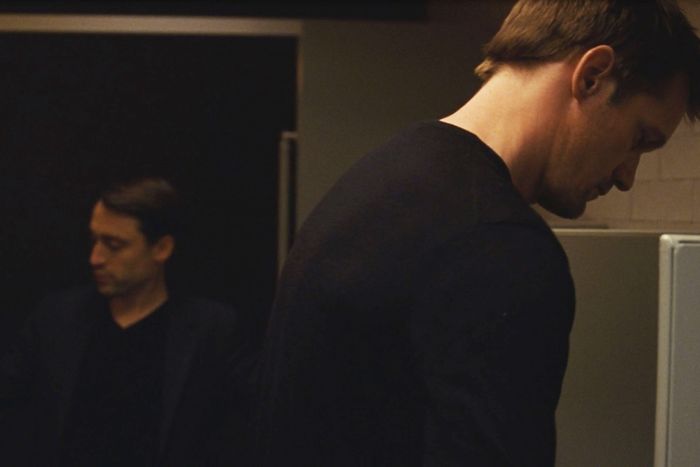
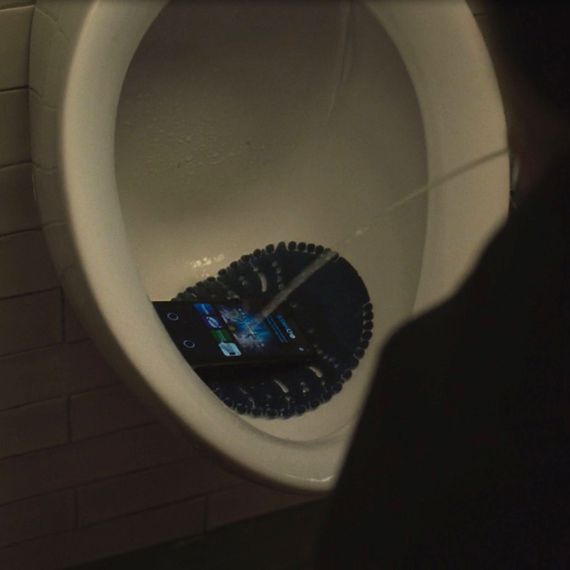
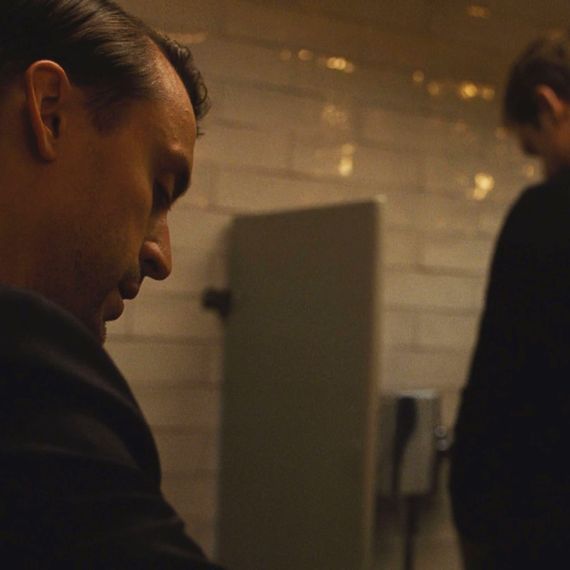
So you didn’t have the actor pounding gallons of water before he–
[An HBO representative patches into the call and says, “There’s time for one more question, please.”]
“We’ve got to put a stop to this.”
[Laughs.] “How much more of this can we allow?”
I guess I should ask you about the scene where Kendall goes searching for the present from his children. That, to me, is a classic Succession scene. It’s so intense and so sad and so pathetic, and it keeps going.
It felt so special on the page. You read it and immediately felt like, “We have to get this right.”
How did you get it right?
Jeremy and I had a great connection. We’re both musical people, so I told him I directed with my ears as much as with my eyes. We bonded over that. We shared songs with each other and kept that party going on set together. The presents scene was one we talked about a lot, but we stopped after a certain point because we didn’t want to talk it into the ground.
We found this amazing room on the third floor of the Shed overlooking the main room where so much of the action takes place. The lights from the main room were bouncing off the glass and into our room. It was just right.
Jeremy is so truthful and honest. I felt like this was an opportunity to create a space for him where he could be truly vulnerable. We thought about every decision in relation to that. Every detail down to the placement of the gifts was something we hoped would give Jeremy the right container to be completely free in — to really feel the scene and find it.
One big thing was we decided we didn’t want to have a bunch of empty boxes. We didn’t want that usual movie magic, where the pile of supposed presents is a bunch of empty boxes with no actual presents inside. We tried to fill as many boxes as we could, so if Jeremy really got into it and started ripping things open, if he started breaking things, if he started stepping on things, he wouldn’t be feeling some fake empty boxes and be taken out of the moment. I love the props department! They’re miracle workers.
How many times can you shoot a scene like that, where you want it all to be real, but it means wrapping dozens and dozens of presents with actual things inside of them?
We had to draw the line somewhere, but in the end, we were prepared to have the pile be trampled on in at least three takes.
This kind of thing is all about creating a space. I was thinking of it as another black box for a wonderful group of theater actors with a set where Jeremy would be able to reach an honest place.
How did it feel while you were finally shooting the scene?
I cried on set. And then I thought, “God, I’m crying over Kendall?” But I couldn’t help it. This kind of scene is what Jeremy is all about: bringing the soul, the truthfulness.
This interview has been edited and condensed for clarity.
*Correction: A previous version of this article stated that the legs connected to the episode’s vagina tunnel were rented. They were actually created by production designer Stephen Carter (“from scratch and with love” according to Scafaria).



